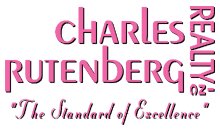 Here’s Part 2 of my article on getting top dollar for your home. I sent this out yesterday as my market letter. This part deals with the price itself and what factors affect it.
Here’s Part 2 of my article on getting top dollar for your home. I sent this out yesterday as my market letter. This part deals with the price itself and what factors affect it.
Here’s the Full Story …
Getting Top Dollar for Your Home: Pricing Strategy – Part 2
In Part 1 we discussed how to approach putting your home on the market in terms of comparing other Solds in the neighborhood, how to judge realistic comparables, days on market, and timing. Now let’s look at how to set your asking price, and what market factors will affect it.
What’s in a Number
Once you know the approximate market value, you will need to decide the exact number. There are three pricing strategies. Even numbers such as $300,000 are seen by the most people, because they fall into two search categories, the $250,000 to $300,000 and the $300,000 to $350,000. However, research suggests that even numbers sell for less at closing. “Just-under” pricing, like $299,000, seems to be the most advantageous. This pricing strategy signals a bargain in our minds. Most buyers focus on the first number, and the number 2 is lower than 3. Thirdly, there’s precise pricing, such as $299,757. This is perceived by buyers to be more accurate, but also suggests that there’s the least negotiating room. So of the three methods, stick to the just-under, in the 9’s.
Room for Negotiation
This is the most difficult area when pricing a home. Sellers want to have room to negotiate, but still receive top dollar. This strategy will work as long as you don’t go more than 5 -10% over current market value. If you get too aggressive you could be perceived as unrealistic and this could stall offers.
Overpricing because you have time
Some sellers who are not in a hurry to sell tend to overprice, with the mindset that they can wait out the market for the offer they want. This will occasionally be successful, but more often than not these sellers will end up chasing the market, downward to a less than market price. Any listing on the market too long will have buyers believing that something is wrong with the property.
Price Cuts
When you have been on the market for 3 to 4 weeks with lots of traffic, but have received no offers – or worse you’ve received an offer but turned it down believing it to be too low – it’s time to make a price adjustment. It’s better to make a substantial price cut rather than small and more frequent ones that arrive at the same price anyway eventually. If buyers thought you were just a bit overpriced, they would have made a lower offer. If they haven’t made offers at all, it’s because they feel that their offer is too far apart from your price. Chasing the market down in drawn-out reductions is a slippery slope you will want to avoid.
© Stephanie Passman



